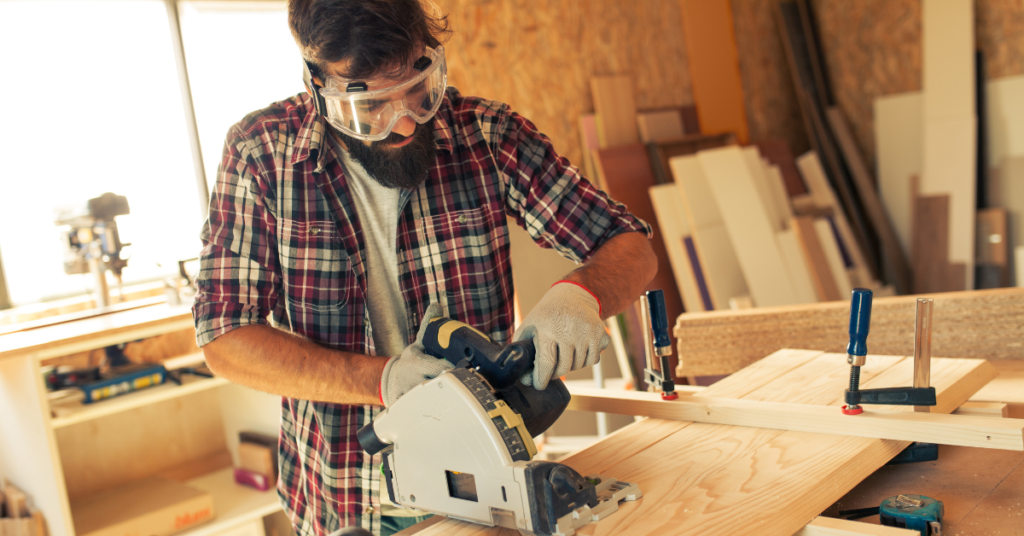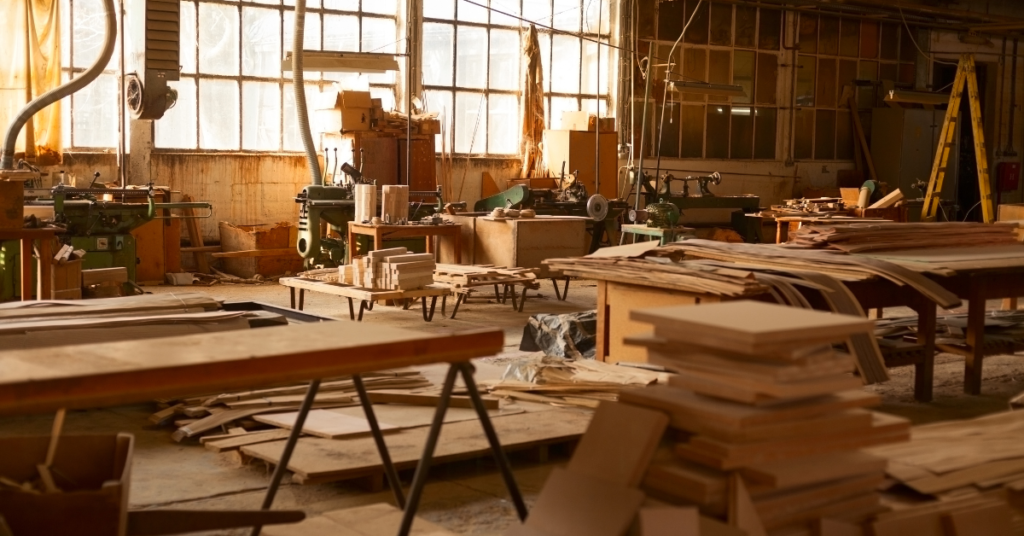Sustainable Furniture Supply Chains: How to Measure and Reduce the Carbon Footprint in the Furniture Industry

The growing demand for sustainable production and regulatory pressure in the area of sustainable development mean that the furniture industry is faced with the need to accurately measure and reduce greenhouse gas emissions throughout the value chain. Every stage – from raw material sourcing, through manufacturing and transport, to use and recycling – contributes to carbon footprints that collectively impact the environment and climate change.
Why does the furniture industry need to caculate its carbon footprint?
Growing regulatory requirements (CSRD, EUDR, CBAM), along with increasing expectations from customers and investors, and pressure for sustainable development, are making carbon footprint measurement and reporting essential for furniture manufacturers. The furniture industry has a complex supply chain, with most emissions occurring outside the factory itself — in raw materials, components, transport, and packaging. Measuring emissions is the first step toward managing climate risk and building a competitive market position.
Although furniture production is often perceived as a “low-emission” sector, it generates significant greenhouse gas emissions, mainly from electricity consumption, the production of wood-based materials, and transport. Across the entire supply chain, there are also other indirect emissions — for example, from the production of adhesives, varnishes, metal components, and textiles.
Measurement in line with the Greenhouse Gas Protocol helps identify and classify these emissions into three scopes (Scope 1, 2, and 3), covering both direct emissions from industrial processes and indirect emissions related to renewable energy, transportation, and material purchases.
Main sources of emissions in the furniture supply chain
Raw material sourcing
The largest share of emissions in the furniture industry comes from wood sourcing and the production of wood-based boards. Deforestation, raw material transport, and energy use in sawmills generate a significant carbon footprint. The use of certified wood (FSC, PEFC) and local suppliers is key to reducing emissions and environmental risks.
Manufacturing and processing
Furniture production requires large amounts of energy, especially in machining and finishing processes. Emissions can be reduced by using renewable energy sources, water-based coatings, and heat recovery systems. Recycling and waste minimization, supported by energy-efficient technologies, deliver both environmental and economic benefits.
Transport and logistics
Transport of raw materials and finished furniture is one of the main sources of CO₂ emissions. Route optimization, shared logistics, and the transition to low-emission vehicles can significantly reduce the carbon footprint. Increasingly, optimization of the so-called “last mile” of delivery also plays an important role.

Packaging
The production of cardboard and plastic films generates emissions, so it is worth choosing recycled materials and designing reusable packaging. Companies like IKEA and other manufacturers are reducing the use of plastic and Styrofoam, striving for fully circular packaging solutions — a change that lowers both emissions and transport costs.
Product use and end of life
The durability of a piece of furniture determines how long wood can act as a carbon sink. Designing long-lasting, repairable, and easily recyclable furniture supports the circular economy and reduces emissions associated with disposal.
How to calculate the carbon footprint of furniture
Like any other product, furniture generates emissions throughout all stages of its life cycle. Measuring a Product Carbon Footprint (PCF) according to ISO 14067 or the GHG Protocol methodology makes it possible to identify which processes have the greatest negative impact on the environment.
The analysis includes:
Defining system boundaries (cradle-to-gate or cradle-to-grave).
Collecting data on energy, fuel, raw material use, transport, and waste.
Applying credible emission factors.
Identifying “hot spots” — areas with the highest climate impact.
Modern tools and platforms such as Plan Be Eco can assist in this process by enabling quick carbon footprint calculations for both organizations and individual products. This allows even smaller companies to start reducing emissions without the need for external auditors — the first step toward a more sustainable future.
What sustainability actions can furniture manufacturers take?
Furniture producers have many opportunities to reduce their climate impact throughout the entire supply chain. A key step is the selection of raw materials — certified wood (FSC or PEFC) and recycled materials significantly reduce emissions and support a circular economy.

Another key area is energy efficiency in production: implementing energy-saving machinery, optimizing manufacturing processes, and using renewable energy — for example, through the installation of solar panels — helps reduce Scope 2 emissions and improve operational efficiency.
Logistics and transport are equally important — consolidating deliveries, choosing road or rail transport instead of air, and planning routes effectively all help minimize the overall carbon footprint of products. Finally, designing products with sustainability in mind, including easy disassembly, repairability, and reuse of components, reduces waste and supports sustainable production across the entire value chain.
Benefits of measuring the carbon footprint
Carbon footprint reporting is not only a regulatory requirement under frameworks like CSRD or environmental policies — it is also a strategic tool for making better business decisions. It allows companies to measure the effectiveness of implemented solutions, cut costs, improve energy efficiency, and build customer trust. In the long term, it helps organizations prepare for the challenges of the green transition and meet the expectations of B2B partners.
For furniture manufacturers, this translates into tangible benefits: by measuring the carbon footprint, companies can precisely identify the most emission-intensive stages of a product’s life cycle — from raw material sourcing and production to logistics. This enables targeted actions that deliver both environmental and economic results, such as choosing suppliers with lower carbon footprints, optimizing energy consumption, or reducing production waste.
Carbon reporting also facilitates access to green finance, participation in public tenders, and collaboration with global retail networks, which increasingly demand emissions data across the supply chain.
Moreover, transparent communication of carbon measurement results enhances brand credibility and strengthens the ESG strategy. In the furniture sector — where consumers are increasingly attentive to material origins and environmental impacts — this creates a competitive advantage that can directly boost sales and customer loyalty. Decarbonization, therefore, becomes a central pillar of sustainable business growth.

How to Start – First Steps in Decarbonization
The process of measuring and reducing emissions may seem challenging, but it can begin with simple steps:
Identify the key sources of emissions within your organization.
Collect data on energy consumption and materials.
Use a tool like Plan Be Eco to calculate the carbon footprint of your company and products.
Set priorities and start implementing emission-reducing solutions — from renewable energy to optimization of production processes.
Establish a concrete reduction target, for example, a 10% reduction in emissions over two years in areas such as transport or auxiliary materials.
Begin communication — publish results, actions, and progress in an ESG report or on your website.
Monitor year over year and update your decarbonization strategy — life cycle assessment is a continuous process, and ISO 14067 emphasizes transparency and comparability of results.
Decarbonization in Practice – Industry Examples
Here are three examples of furniture companies that are already actively working to reduce their carbon footprint and develop sustainable supply chains:
IKEA
In its Climate Report FY24, the company stated that its total carbon footprint amounted to 21.3 million tonnes of CO₂e, which represents a 5% decrease compared to the previous year and a 28% decrease compared to the base year FY16. Materials accounted for as much as 52% of the total footprint (cradle-to-gate).
It is worth noting that as much as 52% of emissions in the IKEA value chain are attributed to materials (e.g. wood, boards, plastics). In response, the company is aiming to reduce material emissions by at least 50% by 2030 compared to FY16. IKEA is increasingly investing in renewable energy sources — including more than 491 factories and suppliers using 100% renewable energy — as well as in the electrification of transport and production optimisation.
Flokk
The company focuses on producing furniture with a reduced carbon footprint, using recycled materials and avoiding toxic substances. According to its 2024 annual report, 39% of the materials used in Flokk products were recycled, and the company’s goal for 2030 is to achieve an average of 40% recycled materials in its main products.
In 2023, 72.5% of production waste was recycled at Flokk’s factories. In addition, the company provides environmental product declarations (EPDs) and sets ambitious climate targets supported by certification and carbon footprint reporting.
Actiu
It is a leading manufacturer of office furniture and was the first large company in the industry to register its carbon footprint in scopes 1, 2 and 3 in the Spanish MITERD registry. The company uses 100% renewable energy and, between 2022 and 2023, avoided emissions of over 2,175 tonnes of CO₂e, saving 4,198 MWh of energy.
Actiu uses recycled materials and certified wood to design durable, easy-to-repair products with a low environmental impact. The LEVEL® 2 (FEMB 2023) certification obtained for 59 product lines confirms compliance with the principles of the circular economy.
How do consumers perceive sustainable furniture production?

Research shows that consumer awareness of environmental issues in the furniture sector is increasing — according to a report for the U.S. market, 94% of respondents stated that living a more sustainable lifestyle is important to them, and 47% said they would be willing to pay more for sustainable products.
In the furniture sector, a PEFC International blog indicates that 51% of global consumers consider whether furniture comes from “traceable and transparent” sources when making a purchase.
On the other hand, studies on purchasing intentions in the furniture industry show that while a positive attitude toward eco-friendly products is important, awareness alone does not always translate into purchase decisions. For example, an Italian study found that although consumers demonstrate environmental responsibility, the key factor influencing purchase is often the symbolic value of design rather than just the product’s sustainability.
Similarly, a recent study from the United Arab Emirates confirmed that perceived sustainability and economic motivation positively influence the intention to buy refurbished furniture, but context factors — such as convenience, price, and availability — still play a major role.
Summary
The conclusions for furniture manufacturers are clear: consumers increasingly value sustainable production — certified raw materials, supply chain transparency, and a lower carbon footprint. However, for this attitude to translate into actual purchase decisions, the product must combine ecological values with good design, quality, availability, and an attractive price. Therefore, communicating sustainability (such as wood sourcing, certifications, and material recycling) and transparent carbon footprint reporting can become a real brand asset, not just an added bonus.
Emissions in the furniture industry are concentrated in raw materials, production processes, and logistics — these are the areas with the greatest potential for reduction. Carbon footprint reporting is now a key element of sustainable development, enhancing reputation and opening the door to new business opportunities.
With the help of tools like Plan Be Eco, furniture manufacturers can not only reduce emissions but also build more efficient, sustainable supply chains, supporting global climate action and a sustainable future.
Sources
https://www.ikea.com/gb/en/files/pdf/65/20/6520b31d/ikea-climate-report-fy24.pdf
https://www.flokk.com/pl/poland/about-us/sustainability
https://2778069.fs1.hubspotusercontent-eu1.net/hubfs/2778069/Flokk%20Sustainability%20Report%202023.pdf
https://www.actiu.com/en/corporate-certificates/level/
https://www.actiu.com/en/articles/sustainability/apply-green-building-projects/
https://www.lulop.com/en_EN/post/show/308036/actiu-presents-life-friendly-s.html
https://www.lulop.com/it_IT/post/show/312088/actiu-first-spanish-manufactur.html
https://www.interiordaily.com/article/9719528/actiu-achieves-b-corp-status-in-record-time/
https://www.levelcertified.eu/service/news/
https://planbeeco.com/
https://ghgprotocol.org/
https://environment.ec.europa.eu/topics/circular-economy/eu-ecolabel-home_en
https://pefc.org/
https://ec.europa.eu/environment/topics/circular-economy_en
https://www.ree.es/
FAQ
Why should furniture manufacturers measure the carbon footprint of their products?
Measuring the carbon footprint helps identify which stages of production and the supply chain generate the most greenhouse gas emissions. This allows the company to reduce energy costs, improve operational efficiency, and comply with regulations such as CSRD or EUDR. It is also a way to build competitive advantage in an industry increasingly focused on sustainability.What are the main sources of emissions in the furniture industry?
The largest share of a furniture product’s carbon footprint comes from materials (e.g., wood, MDF boards, adhesives, varnishes), energy use in production processes, and transport across the supply chain. Significant indirect emissions — Scope 3 — also arise from purchased goods and services.How can manufacturers start reducing CO₂ emissions in their facilities?
It is advisable to begin with simple steps: analyze energy and material use, switch to renewable energy sources, optimize transport, and select certified materials. Tools such as Plan Be Eco can help quickly calculate the carbon footprint of the organization and products, and then plan data-driven reduction actions.
